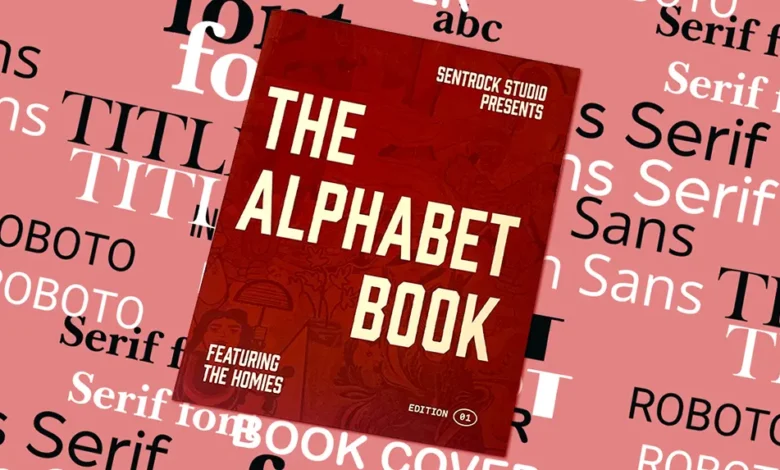The Ultimate Guide to Choosing the Best Fonts for Books

Typography plays a crucial role in book design, influencing readability, aesthetics, and the overall reading experience. Selecting the right fonts for books is a nuanced process that requires careful consideration of factors such as genre, audience, and medium. In this comprehensive guide, we delve into the world of typography and explore the best fonts for books across various genres and formats.
Understanding Typography in Book Design
The Importance of Typography
Typography encompasses the style, size, and arrangement of text on a page, and it has a profound impact on how readers engage with a book. Well-chosen fonts can enhance readability, evoke mood, and convey the author’s voice, while poorly selected fonts can detract from the reading experience and diminish the book’s overall appeal.
Factors to Consider
When selecting fonts for a book, several factors should be taken into account, including genre, audience, and medium. Different genres may call for different typographical styles, while the target audience’s preferences and reading Best Fonts For Books can also influence font choice. Additionally, the medium in which the book will be published—whether print or digital—can affect font selection due to differences in legibility and display capabilities.
Classic Fonts for Printed Books
Serif Fonts
Serif fonts, characterized by small lines or strokes at the ends of characters, are a classic choice for printed books due to their traditional and elegant appearance. Popular serif fonts include:
- Times New Roman: A versatile and widely used serif font known for its legibility and readability.
- Garamond: An elegant and timeless serif font with a distinctive Old-World charm.
- Baskerville: A refined and sophisticated serif font that combines tradition with modernity.
Serif fonts are particularly well-suited for body text in printed books, as the serifs help guide the reader’s eye along the text and improve readability over long passages.
Modern Fonts for Digital Books
Sans-Serif Fonts
Sans-serif fonts, which lack the small lines or strokes at the ends of characters, are a popular choice for digital books and genres that prioritize readability and clarity. Common sans-serif fonts include:
- Arial: A clean and versatile sans-serif font that is widely available and easy to read on screens.
- Helvetica: A modern and minimalist sans-serif font known for its neutrality and legibility.
- Roboto: A contemporary sans-serif font designed for optimal readability on digital devices.
Sans-serif fonts are well-suited for digital books and e-readers, as they offer excellent legibility at smaller sizes and can adapt well to various screen resolutions.
Specialty Fonts for Specific Genres
Display Fonts
Display fonts, also known as decorative or ornamental fonts, are designed to make a statement and add visual interest to book covers, chapter headings, and other display elements. While not suitable for body text due to their ornate and decorative nature, display fonts can be used sparingly to create a distinctive visual identity for a book. Some popular display fonts include:
- Trajan: A classic and elegant display font inspired by Roman inscriptions and often used for titles and headings.
- Bodoni: A stylish and sophisticated display font known for its high contrast and distinctive serifs.
- Gotham: A modern and versatile display font with a clean and geometric design, popular for contemporary book covers and branding.
Font Pairing Strategies
Combining Fonts
When selecting fonts for a book, it’s essential to consider how different fonts will work together harmoniously. Font pairing involves selecting complementary fonts for various text elements, such as body text, headings, and subheadings, to create visual hierarchy and enhance readability. Some common font pairing strategies include:
- Contrast Pairing: Combining fonts with contrasting characteristics, such as pairing a serif font with a sans-serif font, to create visual interest and hierarchy.
- Harmony Pairing: Pairing fonts with similar characteristics, such as similar x-heights or letterforms, to create a cohesive and harmonious typographic palette.
- Style Pairing: Pairing fonts from the same stylistic category, such as two serif fonts or two sans-serif fonts, to create a unified and consistent design aesthetic.
Best Practices for Font Selection
Consider Readability
Above all, readability should be the primary consideration when selecting fonts for a book. Choose fonts that are easy to read at various sizes and in different lighting conditions, and avoid overly ornate or decorative fonts that may hinder legibility.
Maintain Consistency
Consistency is key to creating a cohesive and professional-looking book design. Choose a limited number of fonts—typically two or three—and use them consistently throughout the book for body text, headings, and other text elements to maintain visual harmony and coherence.
Test Before Finalizing
Before finalizing font choices for a book, it’s essential to test them in the context of the book’s layout and design. Print out sample pages or view digital proofs on various devices to ensure that the fonts are legible and visually appealing in the intended format.
Conclusion
In conclusion, selecting the Book Publishing Companies is a critical aspect of book design that can significantly impact readability, aesthetics, and the overall reading experience. Whether choosing classic serif fonts for printed books, modern sans-serif fonts for digital books, or specialty display fonts for specific genres, careful consideration of genre, audience, and medium is essential. By following best practices for font selection, including prioritizing readability, maintaining consistency, and testing before finalizing, authors and designers can create visually stunning and engaging books that captivate readers and leave a lasting impression.


